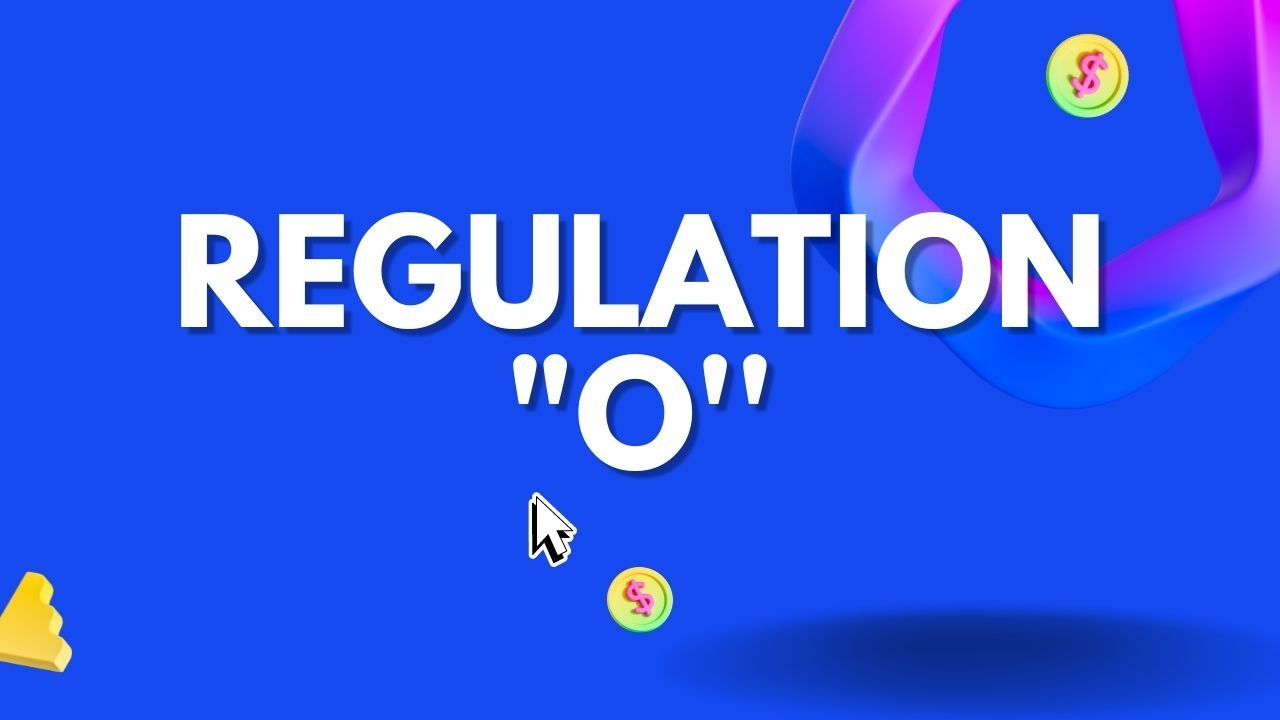Regulation O Checklist : What it is
Regulation O Checklist: What it is and How it Can Benefit You Introduction: Regulation O is a banking regulation that plays a crucial role in the supervision and operation of financial institutions. It is designed to prevent insider abuses and ensure fairness in credit transactions. In this article, we will examine the importance of the Regulation O Checklist, its benefits, and how it can assist you in meeting compliance requirements. So without further ado, let's dive into the details. 1. Understanding Regulation O Checklist: Regulation O Checklist is a comprehensive tool that enables financial institutions to comply with the requirements set forth by the Federal Reserve Board. It serves as a guide to ensure banking organizations follow the necessary protocols when granting credit to insiders, such as executive officers, directors, and principal shareholders. Compliance with Regulation O is crucial because it helps maintain the integrity of the banking system and prevents conflicts of interest. The checklist covers a wide range of aspects, including loan terms, reporting, record-keeping, and restrictions on credit extensions. 2. Benefits of Using the Regulation O Checklist: The implementation of the Regulation O Checklist yields numerous benefits for financial institutions. Let's explore some of the key advantages: a) Increased Compliance: By using the checklist, banks can effectively monitor and control credit transactions involving insiders. This ensures compliance with the regulations and helps prevent any potential violations. b) Preventing Insider Abuses: Regulation O aims to prevent insider trading and other abuses. The checklist helps institutions identify potential conflicts of interest and take necessary steps to mitigate them, promoting fair and ethical practices within the organization. c) Strengthening Risk Management: The checklist assists banks in assessing the risks associated with credit transactions involving insiders. By conducting thorough reviews and implementing necessary controls, financial institutions can minimize risks and enhance their overall risk management framework. 3. How to Implement the Regulation O Checklist: a) Familiarize Yourself with the Requirements: The first step in implementing the Regulation O Checklist is to thoroughly understand the regulatory requirements. Review the Regulation O guidelines provided by the Federal Reserve Board and identify the key obligations that apply to your institution. b) Customize the Checklist: Tailor the checklist to your organization's specific needs and internal practices. Ensure that all relevant areas are covered, such as loan terms, extensions of credit, collateral requirements, and reporting obligations. c) Training and Awareness: Conduct training sessions to educate employees about the importance of Regulation O compliance and the use of the checklist. Foster a culture of awareness and responsibility to ensure everyone understands their roles and responsibilities. d) Review and Monitoring: Regularly review the checklist to identify any gaps or areas that require improvement. Monitor compliance closely and take corrective actions promptly if any deviations are identified. 4. FAQ Section: Q1. What types of transactions are covered under Regulation O? A1. Regulation O covers credit transactions, including loans, lease financing, and other extensions of credit, made by a financial institution to its insiders. Q2. Who qualifies as an insider under Regulation O? A2. Insiders include executive officers, directors, and principal shareholders of a financial institution, as well as their related interests and affiliated entities. Q3. Are there any exceptions to Regulation O? A3. Yes, certain exceptions apply to Regulation O. For example, extensions of credit made in the ordinary course of business on the same terms as offered to the general public may be exempt. Conclusion: The Regulation O Checklist is a valuable tool that ensures compliance with the essential requirements set forth by the Federal Reserve Board. By implementing this checklist, financial institutions can prevent insider abuses, enhance risk management, and strengthen their overall compliance efforts. It is crucial for organizations to understand the significance of Regulation O and utilize the checklist effectively to promote fairness, transparency, and ethical practices within the banking industry. Start using the Regulation O Checklist today and safeguard your institution's reputation while ensuring the integrity of your credit transactions. ![[PDF] Emotion Regulation Checklist (ERC): Preliminary Studies of Cross](https://d3i71xaburhd42.cloudfront.net/24ad6c12f96865d92e0634d3ddafaac2ee205e36/10-Table3-1.png) Image Source : www.semanticscholar.org
Image Source : www.semanticscholar.org  Image Source : www.financereference.com
Image Source : www.financereference.com :max_bytes(150000):strip_icc()/GettyImages-1252406417-33718ff7abec45298d91d3878c9211c7.jpg) Image Source : www.investopedia.com
Image Source : www.investopedia.com  Image Source : store.younginc.com
Image Source : store.younginc.com  Image Source : www.mcglinchey.com
Image Source : www.mcglinchey.com ![[PDF] Emotion Regulation Checklist (ERC): Preliminary Studies of Cross](https://d3i71xaburhd42.cloudfront.net/24ad6c12f96865d92e0634d3ddafaac2ee205e36/8-Table2-1.png) Image Source : www.semanticscholar.org
Image Source : www.semanticscholar.org ![O Checklist Milionário É Bom Mesmo? Vale a Pena Comprar? [2022]](https://agenciars.com.br/wp-content/uploads/2022/01/O-Checklist-Milionario.jpeg) Image Source : agenciars.com.br
Image Source : agenciars.com.br  Image Source : www.researchgate.net
Image Source : www.researchgate.net
[PDF] Emotion Regulation Checklist (ERC): Preliminary Studies Of Cross
![[PDF] Emotion Regulation Checklist (ERC): Preliminary Studies of Cross](https://d3i71xaburhd42.cloudfront.net/24ad6c12f96865d92e0634d3ddafaac2ee205e36/10-Table3-1.png) Image Source : www.semanticscholar.org
Image Source : www.semanticscholar.org Regulation O - Finance Reference
 Image Source : www.financereference.com
Image Source : www.financereference.com Regulation O Definition
:max_bytes(150000):strip_icc()/GettyImages-1252406417-33718ff7abec45298d91d3878c9211c7.jpg) Image Source : www.investopedia.com
Image Source : www.investopedia.com regulation government
Regulation O Toolkit
toolkit regulation
Federal Reserve Board Updates Regulation O FAQs | McGlinchey Stafford PLLC
 Image Source : www.mcglinchey.com
Image Source : www.mcglinchey.com [PDF] Emotion Regulation Checklist (ERC): Preliminary Studies Of Cross
![[PDF] Emotion Regulation Checklist (ERC): Preliminary Studies of Cross](https://d3i71xaburhd42.cloudfront.net/24ad6c12f96865d92e0634d3ddafaac2ee205e36/8-Table2-1.png) Image Source : www.semanticscholar.org
Image Source : www.semanticscholar.org O Checklist Milionário É Bom Mesmo? Vale A Pena Comprar? [2022]
![O Checklist Milionário É Bom Mesmo? Vale a Pena Comprar? [2022]](https://agenciars.com.br/wp-content/uploads/2022/01/O-Checklist-Milionario.jpeg) Image Source : agenciars.com.br
Image Source : agenciars.com.br Self-regulation Plan/checklist. | Download Scientific Diagram
 Image Source : www.researchgate.net
Image Source : www.researchgate.net regulation checklist
Regulation o definition. [pdf] emotion regulation checklist (erc): preliminary studies of cross. Regulation o. Toolkit regulation. Regulation checklist